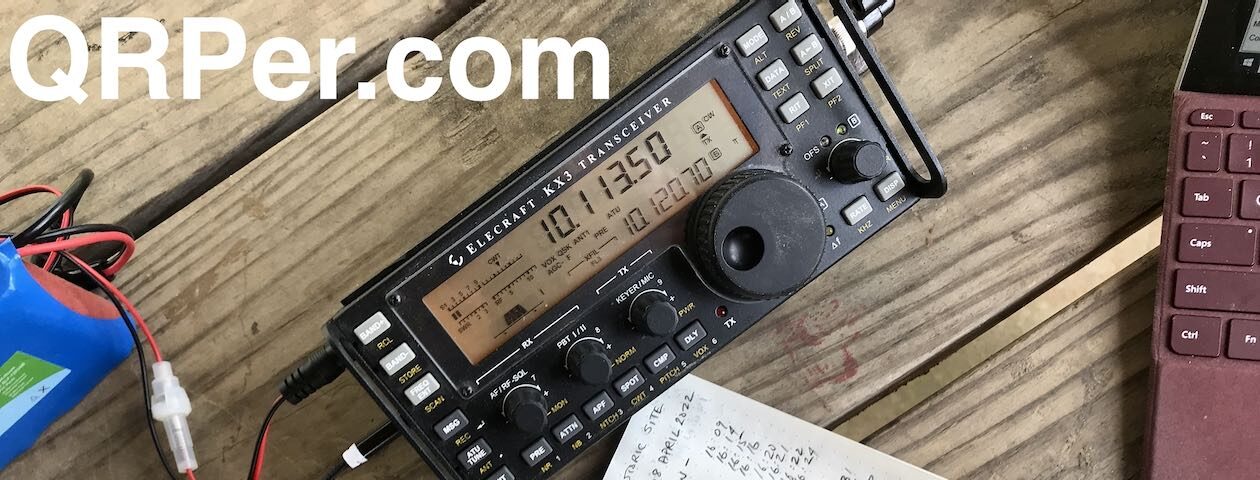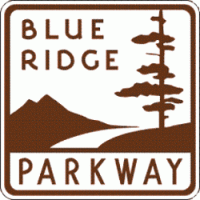 The Blue Ridge Parkway is a massive national park.
The Blue Ridge Parkway is a massive national park.
This stretch of scenic road spans 469 miles (755 km) from North Carolina into Virginia and crossing 29 counties along the way.
I could activate the BRP every day for the rest of my life and find a new activation spot every single day.
But at the end of the day, I return to reliable spots that I love in particular because of the solitude, the access to trails, and of course the trees.
There are trees along the parkway I know so well, I should name them. They’re always there when I’m ready to deploy a wire antenna.
On Wednesday, May 5, 2021, I visited one of my favorite BRP activations sites that I used during the year-long National Parks On The Air (NPOTA) program in 2016.
This particular site is simply a small hill on the side of the road and at the top, there some excellent trees. There’s also a short path leading to the for the Mountains To Sea trail.
This particular spot also overlooks a valley and has a wee bit of altitude. I’m not sure how meaningful that is for an HF op, but it always seems to help.
Blue Ridge Parkway, NC (K-3378)
Of course, since the lab599 Discovery TX-500 was still so new to me, it had to come out to play.
I decided to skip using an ATU, keep things simple, and pair the TX-500 with my MFJ-1984LP EFHW (above).
Gear:
- lab599 Discovery TX-500
- MFJ-1984LP End Fed Half Wave
- CW Morse “Pocket Paddle”
- GoRuck GR1 USA
- Bioenno 3 aH LiFePo Battery (Model BLF-1203AB)
- Arborist throw line
- Tom Bihn Large Travel Tray (holds all of the TX-500 accessories, battery and antenna in the GR1 pack)
- Rite In The Rain Weatherproof Cover/Pouch (affiliate link)
- Muji A6 Notepad (affiliate link)
 I started on 40 meters where I very quickly snagged my good friend, Eric (WD8RIF) who most likely saw my callsign on the RBN and kindly took a break from work to hop on the air work me 5 watts both ways. I’m willing to bet Eric was even a bit envious and wished he could have been outdoors putting parks on the air that morning. It’s fair play, though, because he’s often out doing multi-park runs while I’m working from home.
I started on 40 meters where I very quickly snagged my good friend, Eric (WD8RIF) who most likely saw my callsign on the RBN and kindly took a break from work to hop on the air work me 5 watts both ways. I’m willing to bet Eric was even a bit envious and wished he could have been outdoors putting parks on the air that morning. It’s fair play, though, because he’s often out doing multi-park runs while I’m working from home.
We must live vicariously through each other, right? Right.
Where was I?
Oh yes, the contacts started rolling in on 40 meters.
I worked K4NAN, KD8IE, K8RAT, N4EX, NE4TN, N9UNX, KB4PY, KC5F, KN3A, and NS4J on 40 meters in the span of about eleven minutes. I really enjoy that kind of cadence.
 Next, I moved to 20 meters knowing it might not be an ideal band. I called CQ for nearly 10 minutes, then logged N6GR in New Mexico.
Next, I moved to 20 meters knowing it might not be an ideal band. I called CQ for nearly 10 minutes, then logged N6GR in New Mexico.
This activation reminded me that POTA often feels like a little impromptu family reunion as so many of the ops I logged that day were POTA friends and also enthusiastic activators.
I decided that 12 logged was a great number, so I called QRT and packed up. I most enjoyable activation!

Video
Of course, I recorded one of my real-life, real-time activation videos. Hazel and some very irritating flora are also featured.
Click here to view on YouTube.
Here’s a QSO Map of the activation as well:
I remember during National Parks On The Air, a hunter who worked me daily asked, “Do you ever get tired of activating the Blue Ridge Parkway?”
I told him that the BRP is so large, so diverse, and so beautiful, there’s simply no way I could ever get tired of it.
Do you enjoy QRPer?
Please consider supporting us via Patreon or our Coffee Fund!
Your support makes articles like this one possible. Thank you!


























































 In the space of 15-20 minutes, I only managed to work a few stations on the 20 meter band even though I had been spotted several times on the DX Cluster.
In the space of 15-20 minutes, I only managed to work a few stations on the 20 meter band even though I had been spotted several times on the DX Cluster.



